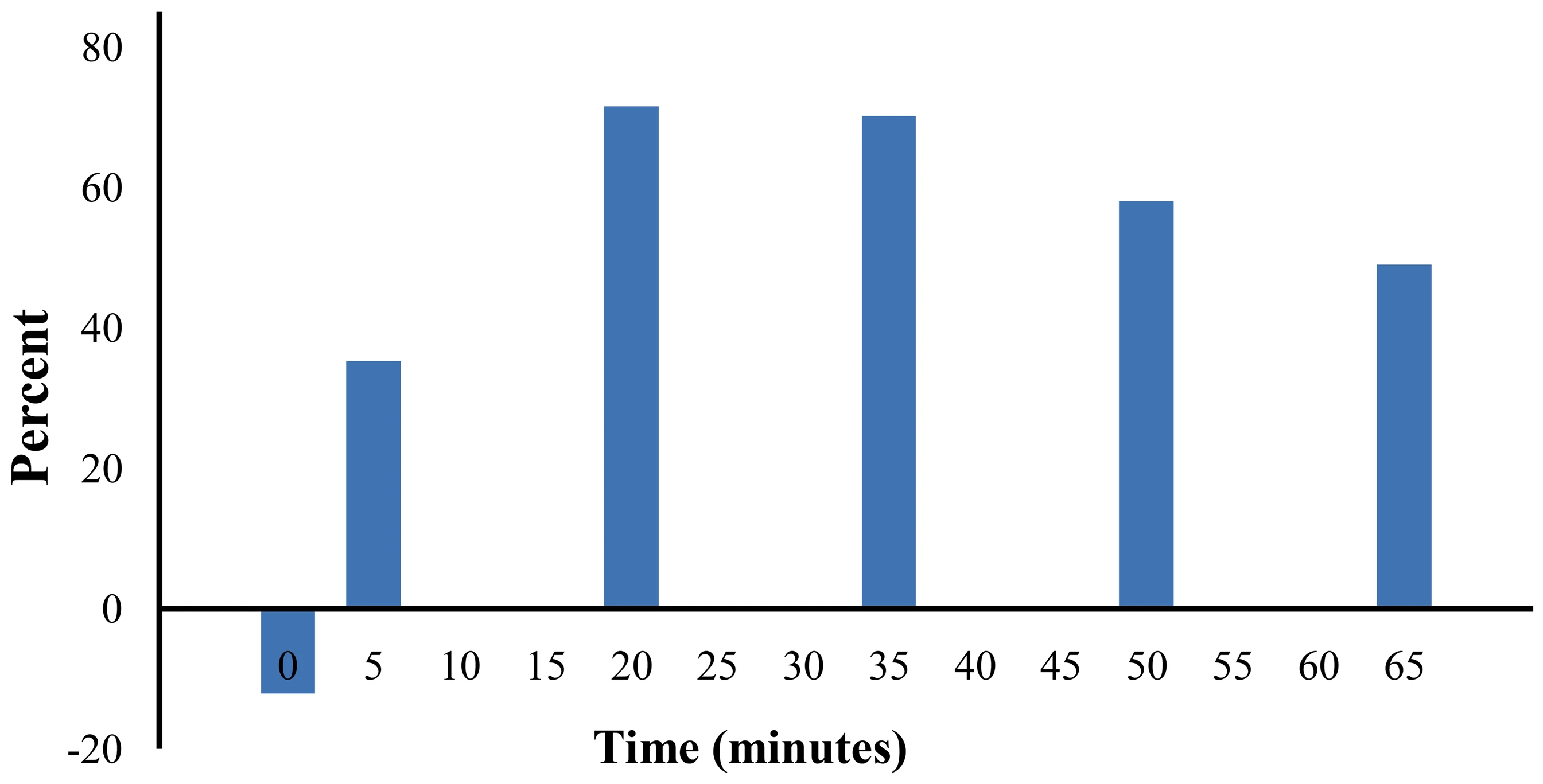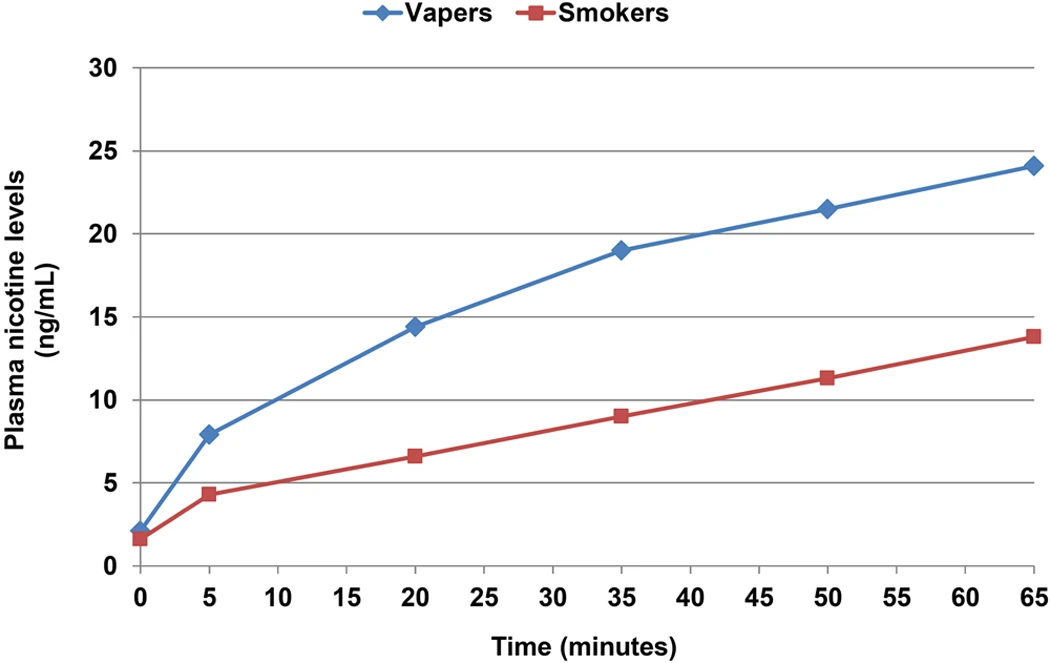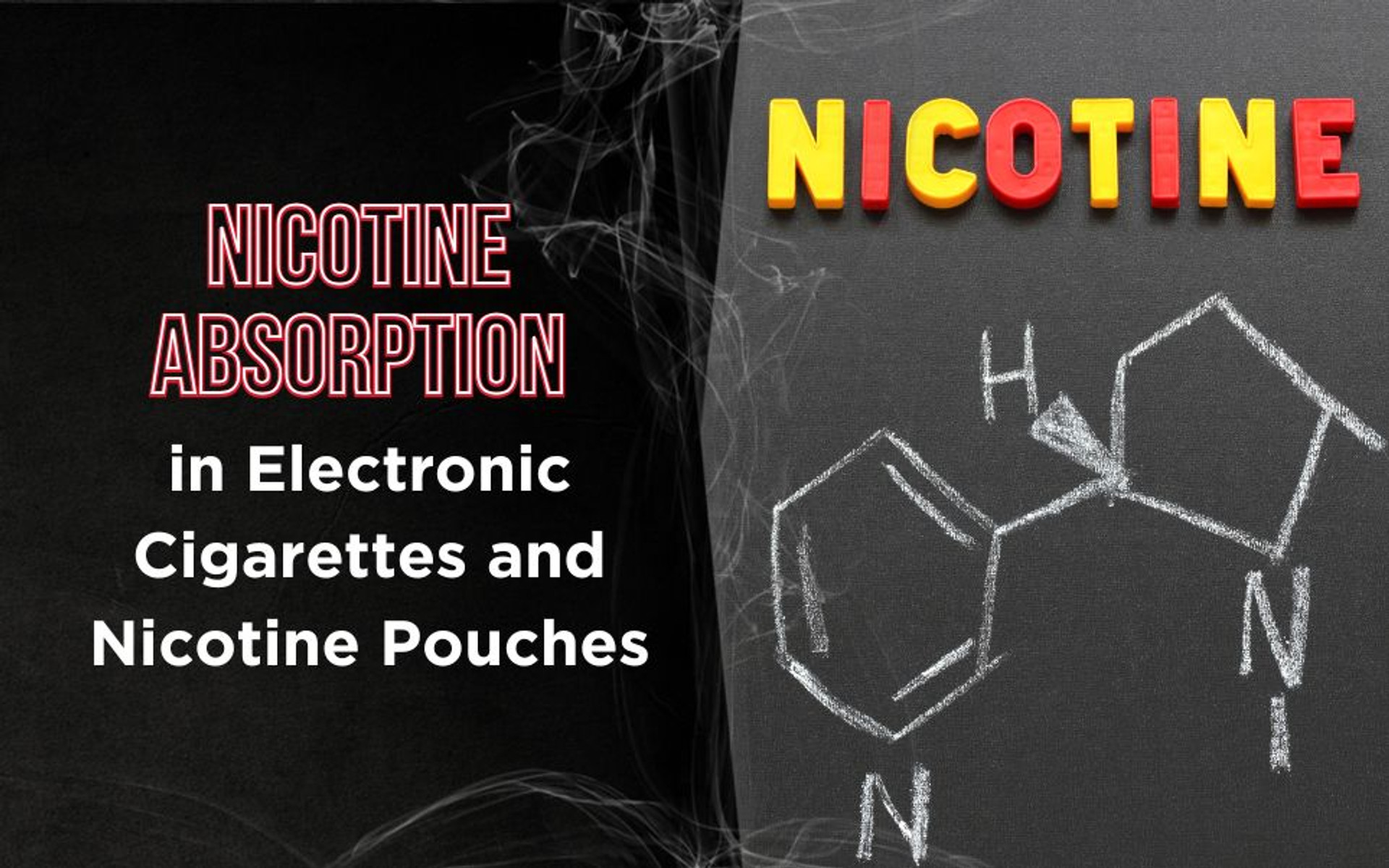Nicotine Absorption in Electronic Cigarettes and Nicotine Pouches: A Comprehensive Overview
Estimated 0 min read
Nicotine absorption is a critical factor in understanding the efficacy and appeal of alternative nicotine delivery systems like electronic cigarettes (e-cigarettes) and nicotine pouches. These products have emerged as potential substitutes for traditional tobacco cigarettes, offering users a way to satisfy nicotine cravings with potentially reduced health risks.
This article explores the science of nicotine absorption in e-cigarettes, comparing first- and new-generation devices, and briefly examines the role of nicotine pouches as an alternative nicotine delivery method. By delving into the mechanisms, efficiency, and public health implications of these products, we aim to provide a clear, informative guide for users and researchers alike.
Nicotine Absorption in Electronic Cigarettes
Electronic cigarettes (e-cigarettes or ECs) have evolved significantly since their introduction, with advancements in device technology impacting nicotine delivery.
A 2014 study compared nicotine absorption between first-generation (cigarette-like) devices and new-generation devices with high-capacity batteries and refillable atomizers. The study found that new-generation devices delivered 35–72% higher plasma nicotine levels than first-generation devices when using an 18 mg/ml nicotine-containing liquid over a one-hour period.
However, compared to smoking a single tobacco cigarette, which achieves plasma nicotine levels of 18.8 ng/ml in five minutes, e-cigarettes delivered only one-third to one-fourth of this amount in the same timeframe (Farsalinos et al., “Nicotine Absorption” 2014). This slower delivery rate suggests that e-cigarettes, while effective for nicotine delivery, do not match the rapid nicotine spike provided by combustible cigarettes, which may influence their addictiveness and efficacy as smoking cessation tools.
The difference in nicotine absorption is largely due to device design. First-generation devices, often resembling traditional cigarettes, rely on basic cartomizers with limited power output, resulting in less efficient aerosol production.
New-generation devices, such as those with variable wattage settings (e.g., set at 9 watts in the study), use advanced atomizers to produce more vapor, enhancing nicotine delivery. For a visual representation of the difference in plasma nicotine levels between these devices see this graph from the 2014 study.

Despite these improvements, the study concluded that even new-generation devices require approximately 35 minutes of use to achieve nicotine levels comparable to one cigarette, highlighting a slower absorption rate akin to nicotine replacement therapies (NRTs) like patches or gum (Farsalinos et al., “Nicotine Absorption” 2014).
A 2015 study further explored how user experience affects nicotine absorption. Comparing experienced vapers to naïve users (smokers new to e-cigarettes), the study found that vapers achieved significantly higher plasma nicotine levels; 46% higher at five minutes and up to 54% higher at 20 minutes, using a new-generation device with an 18 mg/ml liquid. This disparity is attributed to vaping topography, where experienced users take longer, more deliberate puffs to compensate for the delay in aerosol production (Farsalinos et al., “Comparison” 2015).
Here you can see the differences in nicotine levels between vapers and smokers:

These findings underscore the importance of user behavior in maximizing nicotine delivery, suggesting that new users may need guidance to achieve effective nicotine absorption.
Importantly, e-cigarette use has been associated with reduced withdrawal symptoms and cravings. A 2019 study found that regular e-cigarette users experienced significant reductions in withdrawal and craving after vaping, with advanced devices delivering higher nicotine levels (11.5 ng/ml vs. 2.8 ng/ml for first-generation devices) but still less than combustible cigarettes (25.9 ng/ml) (St. Helen et al. 426).
This indicates that while e-cigarettes can help manage nicotine dependence, their slower delivery may reduce their abuse potential compared to traditional cigarettes. Additionally, users reported lower dependence on e-cigarettes compared to their past smoking habits, as measured by the Fagerström Test for Cigarette Dependence (FTCD) and the Cigarette Dependence Scale (CDS) (Farsalinos et al., “Nicotine Absorption” 2014; Farsalinos et al., “Comparison” 2015).
The slower nicotine absorption rate of e-cigarettes has implications for public health policy. The European Union’s 2014 regulation capped e-liquid nicotine concentrations at 20 mg/ml, based on consumption estimates, but not accounting for absorption efficiency. Studies suggest that higher concentrations, potentially up to 50 mg/ml, may be needed to match the nicotine delivery of cigarettes, particularly for heavy smokers transitioning to e-cigarettes (Farsalinos et al., “Nicotine Absorption” 2014). This discrepancy raises concerns about the effectiveness of current regulations in supporting smoking cessation.
Nicotine Pouches: An Emerging Alternative
Nicotine pouches, a newer tobacco-free nicotine delivery system, have gained popularity as an alternative to both cigarettes and e-cigarettes. These small pouches, placed between the gum and lip, deliver nicotine through oral mucosal absorption, offering a discreet and smoke-free option. A 2022 modeling study estimated that if tobacco-free nicotine pouches, such as Zyn, had been introduced in the US in 2000, approximately 600,000 smoking-related deaths could have been prevented by reducing cigarette use (Wold et al. 13441). This suggests a significant public health potential for pouches as a harm reduction tool.
However, a 2025 scoping review highlighted that while oral nicotine pouches (ONPs) appear less toxic than cigarettes and deliver comparable nicotine levels, most data come from industry-funded studies, necessitating further independent research (Robichaud et al. 5). The review also raised concerns about marketing practices that may encourage youth initiation or dual use with cigarettes among adults, potentially undermining public health benefits. Despite these concerns, pouches offer a promising alternative for smokers seeking to quit, as they avoid the combustion-related toxins found in cigarettes and the aerosol-related risks of e-cigarettes.
Comparing Nicotine Delivery Systems
Both e-cigarettes and nicotine pouches aim to deliver nicotine without the harmful byproducts of tobacco combustion, but their absorption profiles differ. E-cigarettes primarily deliver nicotine through inhalation, with new-generation devices offering improved efficiency over earlier models, though still slower than cigarettes.
Nicotine pouches rely on buccal absorption, similar to smokeless tobacco, which results in a slower but steady nicotine release. Both systems are associated with lower dependence compared to cigarettes, as evidenced by user reports on the FTCD and CDS, but their efficacy as cessation tools depends on matching the nicotine delivery to user needs (Farsalinos et al., “Nicotine Absorption” 2014; St. Helen et al. 426).
Public Health Implications
The data suggest that new-generation e-cigarettes and nicotine pouches can serve as effective harm reduction tools for smokers, particularly those with a history of heavy smoking. The ability of these products to reduce withdrawal symptoms and cravings supports their potential in smoking cessation. However, the slower nicotine absorption compared to cigarettes may require users to adapt their usage patterns or opt for higher nicotine concentrations, which current regulations may restrict. Additionally, the lack of independent research on nicotine pouches and concerns about youth-targeted marketing highlight the need for balanced regulatory approaches that maximize harm reduction while minimizing initiation among non-smokers.
Top Nicotine Pouches Available in 2025
For those considering nicotine pouches as an alternative, here are some of the top products available in the market today, based on user reviews and market presence:
- Zyn: Available in various flavors (e.g., peppermint, spearmint) and strengths (3–6 mg per pouch), Zyn is widely praised for its discreet design and consistent nicotine delivery.
- LoLo: Offers a range of nicotine strengths (3–12 mg) and flavors like Mango and wintergreen, known for its long-lasting flavor and slim pouch design.
- Zimo: Popular in Europe, it provides strengths up to 8 mg with flavors like mint and Cinnamon, noted for its soft pouch material.
- WYN: Offers bold flavors like Banana Chill and strengths up to 14 mg, appealing to users seeking variety.
Note: Always consult with a healthcare professional before starting any nicotine product and ensure compliance with local regulations.
Conclusion
E-cigarettes and nicotine pouches represent significant advancements in nicotine delivery, offering alternatives to traditional cigarettes with potentially lower health risks. New-generation e-cigarettes deliver nicotine more efficiently than first-generation devices, though still slower than combustible cigarettes, aiding in withdrawal and craving reduction (Farsalinos et al., “Nicotine Absorption” 2014; St. Helen et al. 426). Nicotine pouches provide a smoke-free option with comparable nicotine delivery, showing promise in reducing smoking-related mortality (Wold et al. 13441). However, further independent research and thoughtful regulation are needed to ensure these products maximize public health benefits while minimizing risks, particularly for non-smokers and youth (Robichaud et al. 5). By understanding the nuances of nicotine absorption, users can make informed choices about these alternatives.
Works Cited
Farsalinos, Konstantinos E., et al. “Nicotine Absorption from Electronic Cigarette Use: Comparison between First and New-Generation Devices.” Scientific Reports, vol. 4, no. 4133, 26 Feb. 2014, doi:10.1038/srep04133.
Farsalinos, Konstantinos E., et al. “Nicotine Absorption from Electronic Cigarette Use: Comparison between Experienced Consumers (Vapers) and Naïve Users (Smokers).” Scientific Reports, vol. 5, no. 11269, 17 June 2015, doi:10.1038/srep11269.
Robichaud, M. O., et al. “The Potential Impact of Oral Nicotine Pouches on Public Health: A Scoping Review.” Nicotine & Tobacco Research, vol. 27, no. 2, Feb. 2025, pp. 3–10, doi:10.1093/ntr/ntab005.
St. Helen, Gideon, et al. “Nicotine Absorption during Electronic Cigarette Use among Regular Users.” Nicotine & Tobacco Research, vol. 20, no. 4, Apr. 2018, pp. 425–433, doi:10.1093/ntr/ntx091.
Wold, Lauren E., et al. “Estimating the Public Health Impact If Tobacco-Free Nicotine Pouches Had Been Introduced into the US in 2000.” BMC Public Health, vol. 22, no. 1, 2022, p. 13441, doi:10.1186/s12889-022-13441-0.







